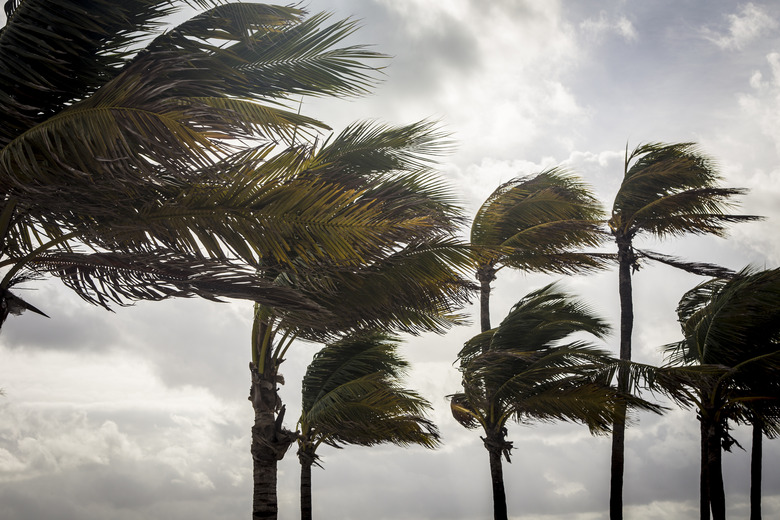When Is Hurricane Season In Hawaii?
Many small islands situated in open oceans face higher risks of hurricanes than other places in the world. However, Hawaii has a relatively low risk of hurricane activity, with the bulk of it occurring in the latter half of the year. The Hawaiian Islands act as a major transit hub over the Pacific Ocean and draw countless tourists each year, along with many scientist and conservationists who study its biologically diverse ecosystem. In the rare instances hurricanes strike, the aggressive weather wracks the islands, occasionally heralding evacuations from the shoreline.
TL;DR (Too Long; Didn't Read)
Hurricanes can cause massive amounts of destruction to coastal and island areas. However, a high-pressure area near Hawaii keeps the island state relatively safe from these destructive winds, which usually form from July to December.
What Are Hurricanes and What Can They Do?
What Are Hurricanes and What Can They Do?
About two-thirds of all hurricanes, also called tropical cyclones and typhoons, form in the Northern Hemisphere. Two ranges of latitudes act as the origin points for most hurricanes: between 4 and 22 degrees south latitude and between 4 and 35 degrees north latitude. Hurricanes form in areas of low pressure over the ocean, and the quickly accelerating winds dramatically spin, capable of reaching destructive speeds, although they slow down when they hit a body of land. They form when cold air and warm air meet over the ocean and swirl upward and to the side, causing more air to flow in. The speed gradually increases to levels that can be dangerous to humans. On average, hurricanes last six days, but they can exist for only a few hours or for as long as two weeks. Hurricane-force winds at their peak often occupy an area with a radius that approaches 200 miles.
Hurricanes can cause tremendous damage to coastal areas. They can raise the sea level up to 30 feet and shift massive amounts of sand, functionally creating and destroying beaches. They can hurl heavy objects such as boulders and vessels. While a hurricane's speed diminishes when it reaches land, it can still cause damage. Across the world, around 10,000 people die from hurricanes and tropical storms each year. The cost of cleanup and repair after hurricanes strike can be in the billions.
Hawaii Is a Low-Risk Zone
Hawaii Is a Low-Risk Zone
Hawaii sees relatively few hurricanes compared to other coastal and island locales. Since 1950, around the time it became an official part of the United States and western scientists began keeping track, only four hurricanes managed to do significant damage to the islands. Hurricanes appear most often in the late summer when the ocean surface is the warmest, which leads to low air pressure over the water. Hawaii has a high-pressure zone located to its northeast that helps keep water temperatures mostly stable year-round. Because hurricanes require an area of low pressure to form, this stable area shields the islands. However, climate change may affect the high-pressure zone, and some scientists fear Hawaii may see more hurricanes in coming years.
References
- Western Regional Climate Center: Climate of Hawaii
- University of Hawaii at Manoa: Hurricanes in Hawaii
- University Corporation for Atmospheric Research: Hurricane Damage
- Encyclopaedia Britannica: Formation of Tropical Cyclones
- U.S. Environmental Protection Agency: What Climate Change Means for Hawaii
Cite This Article
MLA
Johnson, Doug. "When Is Hurricane Season In Hawaii?" sciencing.com, https://www.sciencing.com/hurricane-season-hawaii-4604875/. 11 April 2018.
APA
Johnson, Doug. (2018, April 11). When Is Hurricane Season In Hawaii?. sciencing.com. Retrieved from https://www.sciencing.com/hurricane-season-hawaii-4604875/
Chicago
Johnson, Doug. When Is Hurricane Season In Hawaii? last modified March 24, 2022. https://www.sciencing.com/hurricane-season-hawaii-4604875/
